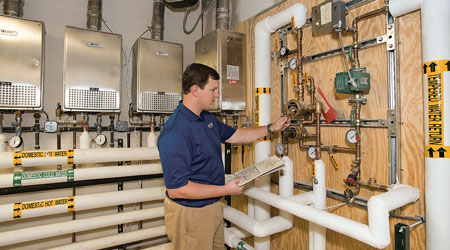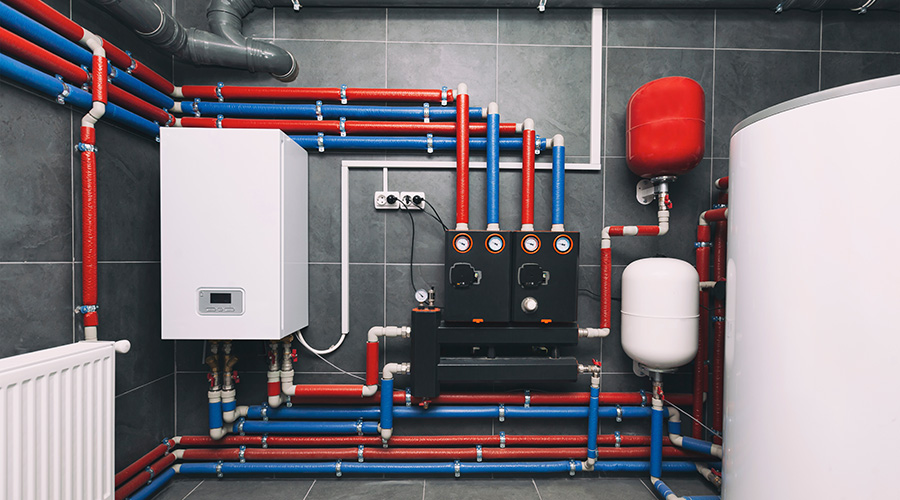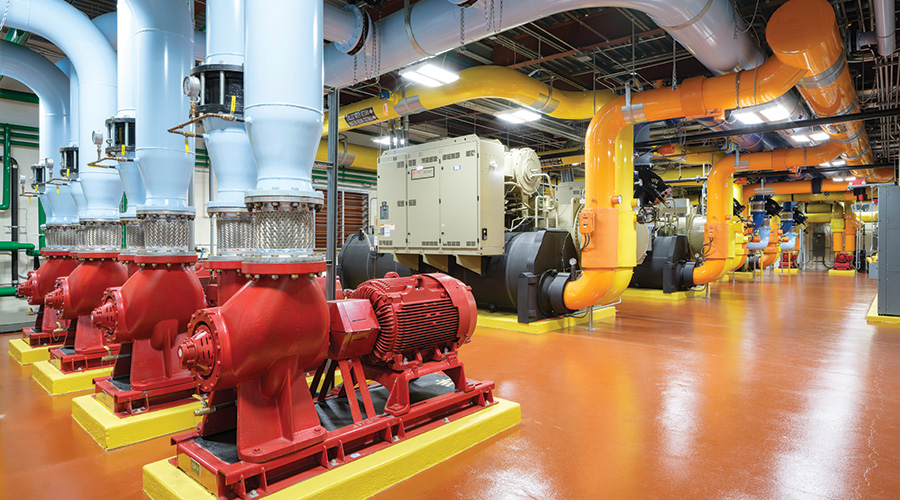 Advances in water heater materials and technologies can result in greater energy efficiency and long-term reliability to facilities.
Advances in water heater materials and technologies can result in greater energy efficiency and long-term reliability to facilities.Water Heaters: Understanding Building Needs
Managers who understand how hot water is being used within their facility can better specify the proper water heater for their building.
Maximizing a water heater’s efficiency depends largely on understanding the facility in which it will be installed. Factors such as building condition and user requirements play a large role in a manager’s specification decision, as will the square footage of the application in question.
Large facilities, including “athletic buildings, dormitories, commercial kitchens and laundries, each have a different load profile, and all need to be accounted for, whether from a central plant or separate systems for each building,” says Vincent D’Amore with Aerco. “Adding together each demand without considering when an application’s peak will occur and if it will coincide with another application’s peak will lead to significant oversizing.
“In small facilities, the cafeteria will most likely be the largest single use, and the peak may coincide with the facility’s other loads. In health care facilities, bacterial control — including Legionella — and cross-contamination drive system design toward higher temperatures and away from storage. Commercial office buildings have extremely diverse loads and call for heaters capable of meeting a wide range of loads. These facilities are ideal for water-to-water heating as the space heating systems will have enough capacity to meet both demands.”
The size of a facility is one determining factor in water heater selection. Managers also need to be aware of the unique challenges that facility type and user activities also can present. Consider these facility types:
Education facilities. These buildings usually require hot water for lavatory sinks, large kitchens and locker room showers. Due to the presence of science labs in many of these, they also might require emergency showers and eyewash stations. For showers and emergency wash stations, managers typically need a large dump capacity ready to go at all times.
Health care facilities. These buildings typically require a water heater that is capable of sanitation. Some water heaters might not be able to achieve those temperatures, depending on their controls and thermostats. As a result, managers need to check the temperatures that are required to satisfy customer demands, and they need to choose a water heater that can meet those demands.
Commercial office buildings. These facilities use the least amount of hot water among the facility types mentioned — unless they have large kitchens or gyms with showers. Without those components, most of the hot water use involves lavatory sinks, which is minimal throughout an average day.
In addition to understanding the size and type of the facility, managers also must account for the differences among facilities when going through the specification process.
“Every application is unique,” Pinto says. “Even though one type of facility may be similar to another, there are many variables to consider. Some of those variables are the number and type of fixtures, the amount of people, incoming water temperatures, and hot water set point temperatures.
“If this is for a replacement application, ask questions. Ask the tenants, users, employees, or whomever is using the hot water if it has been enough to cover their needs. Do they run out of hot water? What is typical day-to-day, and how often do you use hot water? These questions are going to give the specifier a better understanding of the way the facility is being used and guide them in their selection process.”
Related Topics:














